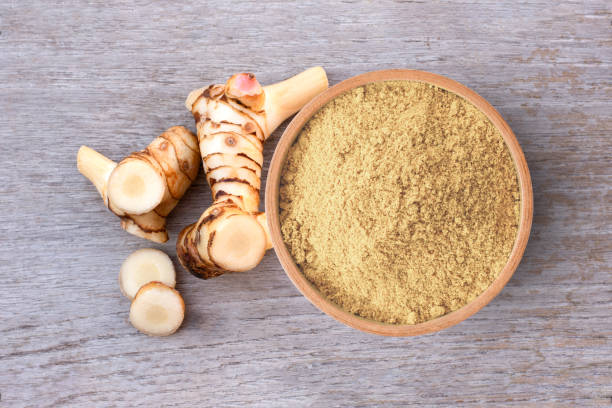Tired of eating the same bland dishes every day? Do you wish to improve the quality of your dishes? Herbs and spices add a mystical twist from the very beginning. Fresh vs. dried herbs and spices offer something special to a dish. The relevance of both will be discussed, along with a comparison of their features, benefits, and overall strengths and weaknesses.
As we go along, we will also provide some advice based on the pro’s expertise. Come along on our gastronomic adventure as we learn how to enhance our dishes with the right combination of herbs and spices. Prepare to add the tantalizing freshness of new finds or the profound depth of dried treasures to your cooking.
Fresh vs. Dried Herbs and Spices: Characteristics and Advantages of Fresh Ones
Fresh herbs possess a vibrant, aromatic quality that enlivens the senses, often being the preferred choice for recipes that highlight their delicate flavors. In this article, we dig deeper into the nuances of fresh herbs and spices.
Fresh Herbs’ Description
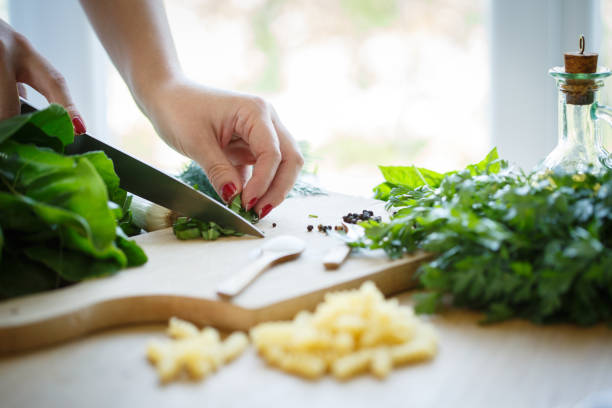
Fresh herbs boast an enticing appearance with vibrant, verdant leaves and sometimes delicate, colorful blooms. Their aromatic allure is undeniable, releasing an intoxicating fragrance that fills the air with freshness and natural goodness. The flavor of fresh herbs is notably bright and subtle, allowing their nuanced taste to shine through in dishes.
Each herb offers unique characteristics; for example, basil brings a sweet, slightly peppery note, while cilantro imparts a refreshing, citrusy zing. These green gems’ lively and herbaceous flavors enhance culinary creations, making them a delightful addition to salads, sauces, soups, and a wide array of dishes.
Nutritional Benefits of Using Fresh Herbs in Cooking
Fresh herbs are rich in essential vitamins, minerals, and antioxidants, contributing to a healthier diet. They often contain high levels of vitamins C, A, and K, which support immune function, vision, and bone health. Additionally, fresh herbs offer anti-inflammatory properties and may aid digestion. Including herbs like parsley, cilantro, and mint can help detoxify the body and improve overall well-being. Incorporating these nutrient-packed ingredients into your meals enhances your culinary creations’ flavor and nutritional value.
Enhanced Taste and Brightness in Dishes with Fresh Herbs
Fresh herbs can impart enhanced taste and brightness to dishes, elevating them to a whole new level of flavor sophistication. Fresh herbs’ inherent oils and aromatic compounds provide food a pleasant burst of freshness, stimulating the palate and enhancing the overall flavor profile. Whether it’s the earthy notes of rosemary, the zesty tang of thyme, or the citrusy kick of basil, each herb brings its unique charm to the table. Their ability to balance and complement other ingredients enhances the harmony of flavors, making dishes more enticing, memorable, and satisfying for the taste buds.
Fresh vs. Dried Herbs and Spices: Characteristics and Advantages of Dried Ones
We’ll learn the ins and outs of dried herbs and spices, including how to use them in different ways, how long they last, and how to keep their flavor intact. Join us as we reveal the magic of these culinary treasures and see how they can simply boost your gastronomic masterpieces, whether you’re a budding chef or a seasoned home cook.
Drying Process and Preservation of Dried Herbs
The drying process is a traditional method of preserving herbs, extending their shelf life and ensuring year-round availability. To dry herbs, they are harvested and typically hung upside down in a warm, well-ventilated area to allow moisture to evaporate slowly. Alternatively, herbs can be dried in an oven or a dehydrator at low temperatures.
As the moisture content reduces, the flavors and aromatic compounds become concentrated, intensifying the herb’s taste. Once fully dried, the herbs are crushed or crumbled and stored in airtight containers away from light and heat. Dried herbs can retain their flavor and potency for several months to a year if they are dried and stored properly.
Shelf-Life and Convenience of Dried Herbs in the kitchen
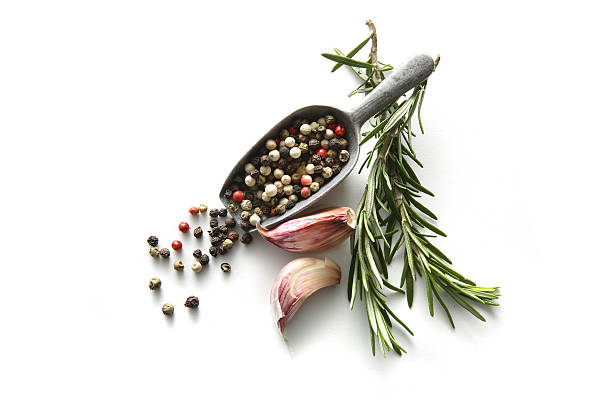
Dried herbs offer impressive shelf life and exceptional convenience in the kitchen. When stored properly in airtight containers, away from light and moisture, they can retain their flavor and potency for up to a year or even longer. This extended shelf life makes dried herbs a practical pantry staple, always at the ready whenever a recipe calls for them.
Their concentrated flavors and easy availability throughout the year eliminate the need for frequent grocery store trips, simplifying meal preparation. With dried herbs on hand, home cooks can effortlessly add bursts of flavor to dishes, enhancing the culinary experience without the need for fresh herb shopping and constant replenishment.
Concentration of Flavors and Versatility
Drying herbs intensify their flavors, creating a concentrated taste profile that makes them an invaluable culinary asset. The drying process enhances the herbs’ aromatic components and essential oils, giving them a richer, more intense flavor. This concentrated taste allows a small amount of dried herbs to go a long way in seasoning dishes.
Additionally, dried herbs are incredibly versatile, as they can be easily incorporated into various recipes without the concerns of wilting or spoilage. Dried herbs are an easy and flavorful method to improve a variety of recipes, from deepening soups and stews to infusing marinades and sauces.
Best Uses of Fresh Herbs in Cooking
Find out how to make the most of fresh herbs in the kitchen. These culinary gems are the key to taking your dishes to the next level, from the tantalisingly green leaves to the burst of freshness they bring.
Complementing Salads, Dressings, and Cold Dishes
Fresh herbs are exceptional companions for salads, dressings, and cold dishes, enhancing their flavors and adding freshness. The vibrant colors and delicate textures of fresh herbs beautifully complement the visual appeal of salads, elevating them from ordinary to extraordinary. Whether it’s a sprinkle of parsley, cilantro, or dill, these herbs infuse salads with a delightful herbal zing.
Fresh herbs also shine in dressings, bringing complexity and brightness to vinaigrettes and creamy concoctions. Additionally, they provide a refreshing contrast when added to cold dishes like pasta salads, coleslaws, or chilled soups, enhancing the overall taste experience.
Incorporating Fresh Herbs in Marinades and Sauces
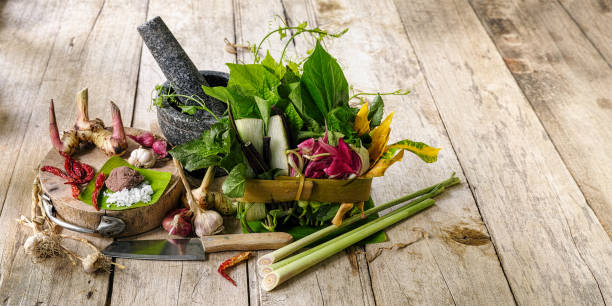
Fresh herbs’ natural oils and aromatic compounds infuse marinades, transforming ordinary meats, poultry, or vegetables into delectable, flavor-packed delights. Whether it’s a blend of rosemary and thyme for a savory roast or a mix of basil and oregano for a Mediterranean-inspired chicken dish, fresh herbs add depth and character to marinades. Similarly, chopped or pureed fresh herbs lend their vibrant flavors in sauces, creating a symphony of tastes that complements everything from pasta and seafood to grilled meats and vegetables.
Garnishing and Adding Finishing Touches
Fresh herbs are the perfect garnishing and finishing touches that bring a touch of elegance and flavor to dishes. Whether it’s a sprinkle of chopped parsley on a hearty stew, a few basil leaves on a vibrant pasta dish, or a sprig of mint on a refreshing dessert, fresh herbs elevate the visual appeal and taste of the final presentation. Their vibrant colors and delicate textures add a pop of freshness, making the dishes look more inviting and tasty. The subtle fragrance and nuanced flavors of fresh herbs provide a delightful finishing touch, enhancing the overall dining experience and leaving a lasting impression on the palate.
Best Uses of Dried Herbs in Cooking
While the brilliant beauty of fresh herbs is undeniable, their dried cousins are an invaluable companion in the kitchen due to their concentrated flavors and extended shelf life. Learn how to use dried herbs to their full potential in everything from substantial stews to delicious marinades.
Fresh vs. Dried Herbs and Spices: Dried Herbs for Long-Cooking Dishes
Long-cooking dishes are ideal candidates for the slow release of dried herbs, as they allow the herbs’ flavors to meld and infuse the dish over time. Dried herbs can withstand the prolonged cooking process without losing their potency, ensuring a consistent taste throughout.
For hearty stews, braises, and soups simmering for hours, dried herbs like bay leaves, thyme, and oregano slowly release their concentrated flavors, enhancing the depth and complexity of the dish. The slow infusion of these dried herbs adds a comforting and soulful dimension to the final creation, resulting in a rich, well-rounded, and satisfying culinary experience.
Incorporating Dried Herbs in Soups, Stews, and Simmered Recipes
Dried herbs are essential ingredients for soups, stews, and simmered recipes. Their concentrated flavors and long shelf life make them perfect for these slow-cooking dishes. As they simmer and meld with other ingredients, dried herbs like thyme, rosemary, and sage release their aromatic essence, infusing the entire dish with warmth and depth.
Their dried form also ensures that the flavors remain consistent throughout the cooking process. Whether it’s a hearty vegetable soup, a savory beef stew, or a flavorful simmered curry, incorporating dried herbs adds a comforting and savory dimension, enhancing the overall taste and truly satisfying these dishes.
Baking and Seasoning Dishes with Dried Herbs
Baking and flavoring food with dried herbs is a delicious technique to give various meals depth and complexity. In baking, dried herbs like dried basil, oregano, thyme, and rosemary can infuse bread, focaccia, and pizza crusts with savory notes, transforming ordinary dough into a flavorful delight. They also shine in savory baked goods like herb-infused crackers, scones, or biscuits, elevating them to new heights of taste.
Dried herbs enhance the taste of roasted meats, grilled vegetables, and sautéed dishes by blending seamlessly with other ingredients. Their concentrated flavors ensure evenly distributed seasoning, resulting in a harmonious and well-balanced taste. Dried herbs are convenient and versatile, making them a versatile pantry staple for enhancing flavors throughout the year.
Fresh vs. Dried Herbs and Spices: Storage and Shelf Life
The difference between fresh and dried herbs in terms of storage and shelf life is crucial if you want to keep the fascinating flavors from your culinary excursions intact. We’ll show you how to preserve the flavor and perfume of your herbs in a variety of ways, from air-drying to freezing.
Proper Storage Methods for Fresh Herbs to Prolong Freshness
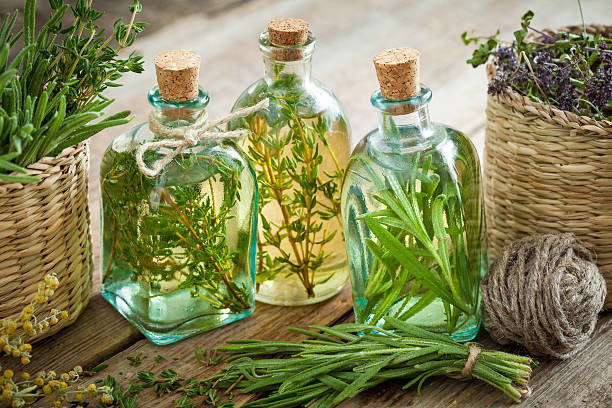
One effective method is to treat them like fresh flowers – trim the ends of the stems and place them in a jar or glass with water, covering the leaves loosely with a plastic bag. Keep the setup in the refrigerator’s vegetable crisper or a cool spot. Alternatively, you can wrap the herbs in a damp paper towel and store them in a resealable plastic bag, squeezing out excess air before sealing. Regularly check for any wilting or discoloration and replace the damp paper towel when needed.
Storing Dried Herbs to Retain Flavor and Potency
Store dried herbs in airtight containers, such as glass jars or resealable bags, away from light, heat, and moisture. Please keep them in a cool, dark pantry or cabinet. To prevent air from entering the containers and causing the herbs to lose flavor and aroma, ensure they are well shut. Label the containers with the herb’s name and date of storage for easy identification. With these storage practices, dried herbs can maintain their quality and potency, allowing you to enjoy their flavors in your culinary creations for an extended period.
Frequently Asked Questions
Q: Which is preferable, fresh or dried herbs?
A: Some herbs are usually best fresh when it comes to cooking—frequently, drying more sensitive herbs results in significant flavor loss. It is advised to use fresh herbs whenever feasible when cooking with delicate ones like dill, tarragon, cilantro, chives, mint, and parsley.
Q: What benefits do fresh herbs have over dried ones?
A: When cooked, dried herbs release a greater taste. Heat causes the oils in them to be released, giving the food a richer flavor. Fresh herbs will probably be more flavorful if you won’t be cooking with them.
Q: Do chefs use dried herbs?
A: According to many chefs, fresh herbs outperform dried herbs, and most of the time they are correct. The majority of herbs include taste components that are more volatile than water. Therefore, flavor is also lost during the drying process along with water.
Q: Are nutrients lost when herbs are dried?
A: The nutritious benefit of their natural equivalents is still included in both herbal preparations so that you may relax. The nutritional value of freeze-dried herbs is generally higher than that of air-dried ones. Due to the extraordinarily high temperatures, they are exposed to during air-drying, certain nutrients are lost.
Q: What factors are crucial when converting fresh herbs to dried herbs?
A: A basic guideline for the proportion of dried to fresh herbs in a dish is to use one-thi1vrd as much dried herb as fresh herb. For instance, if a recipe calls for 1 Tbsp. of dried sage, you may substitute fresh sage for it. Use one teaspoon of fresh sage.
Final Thoughts
Both fresh and dried herbs and spices have advantages in the world of cuisine. Fresh herbs enhance salads, dressings, and cold foods with their vivid look, delicate fragrances, and subtle flavors. Additionally, they offer beneficial nutritional advantages by enhancing our meals with important vitamins and antioxidants.
On the other hand, dried herbs are more versatile, have a longer shelf life, and have concentrated flavors. They excel in marinades, sauces, baking, seasoning, and long-cooking meals, giving food depth and complexity. Home cooks can establish a harmonic balance of flavors by knowing the advantages of each shape, assuring memorable and delicious culinary experiences in every meal.

